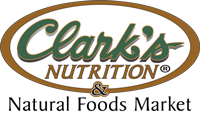Gluten Free
What does following a gluten-free diet mean? That you're embarking on an easy diet with a wide range of health-promoting effects. Instead of dwelling on what you’re giving up, consider that you’re going to enjoy a whole new world of delicious food options to meet your special dietary needs. You’ll be eating seasonally, choosing more fresh fruits and vegetables, focusing on meats, seafood, poultry, legumes, lentils, corn, and rice, and discovering fascinating ancient grains such as quinoa, amaranth, and millet. You’ll be able to eat potatoes, eggs, most cheeses, even chocolate (!)—and enjoy them without guilt because you’ll be taking good care of your body. In fact, you’ll probably end up eating—and feeling—better than ever!
Visit this page for more information about living Gluten Free
---
We carry a large variety of gluten free items, the brands listed below represent just some of the offerings we carry


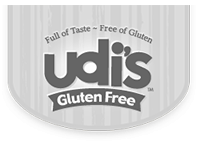



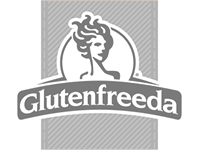
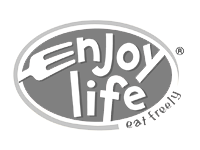
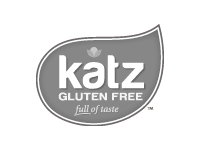



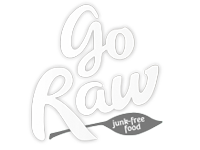
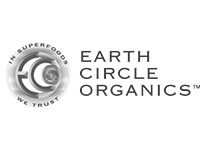

More Diets
- By Victoria Dolby Toews, MPH
Picking the Best Probiotic
Think you might want to swallow live bugs? No, it’s not a reality show stunt, it’s actually something you might want to do if you have digestive problems, such as lactose intolerance or diarrhea after using antibiotics. These “good bugs” are probiotic bacteria—also known as beneficial bacteria—that live in your gut and contribute to your everyday health and well-being.
SUPPLEMENT: Fructo-oligosaccharides (FOS)
- USED FOR: Indigestion and prevention of eczema
- ACTION: A “prebiotic,” which is a source of food for friendly bacteria in the gut
- HOW TO TAKE: 2,000 to 3,000 mg per day with meals, reduce dosage if you experience gas
'Prebiotics' provide the right food for probiotic bacteria to thrive
Love That Bug
Active-culture yogurt provides probiotic bacteria, as does kefir (drinkable yogurt), cottage cheese, and some milks; there are even snack bars on the market with probiotic bacteria. Probiotic dietary supplements are available as powder, capsules, tablets, chewables, gummies, and liquid.
Probiotic gummies are a great option for kids. You can use these tasty treats to add probiotics into your child’s daily routine, or to help her take probiotics after a bout of diarrhea due to antibiotics or infection. Look for a product without artificial flavors, colors or preservatives, and no more than 4 grams of sugar per serving.
STRAIN: Bifidobacterium lactis- USED FOR: Diarrhea (post-antibiotic and traveler’s)
- ACTION: Restores gut microflora
- HOW TO TAKE: 1 to 3 billion live organisms per day or follow label directions. Start before antibiotic use and continue afterwards for as many days as the antibiotics were used or start a few days before a trip and continue daily during travel.
- USED FOR: Strengthening immune system and fighting yeast infection
- ACTION: Creates acidic environment to discourage growth of harmful microorganisms and produces natural antibiotics
- HOW TO TAKE: 1 billion live organisms per day or follow label directions. Another yeast infection option: insert capsule as a vaginal suppository or apply active-culture yogurt daily to the vagina for up to two weeks (and once a week for prevention).
- USED FOR: General digestion aid
- ACTION: Contributes healthy bacteria to the gut; inhibits reproduction of harmful bacteria
- HOW TO TAKE: 1 billion live organisms per day or follow label directions.
- USED FOR: Lactose intolerance
- ACTION: Produces lactase to digest lactose (milk sugar)
- HOW TO TAKE: 1 billion live organisms per day or follow label directions.
- USED FOR: Diarrhea (post-antibiotic and traveler’s)
- ACTION: Replenishes healthy gut flora
- HOW TO TAKE: 1 to 3 billion live organisms per day or follow label directions. Start before antibiotic use and continue afterwards for as many days as the antibiotics were used or start a few days before a trip and continue daily during travel.
- USED FOR: Diarrhea (infectious, post-antibiotic, and traveler’s), irritable bowel syndrome, strengthening immune system, and prevention of tooth decay
- ACTION: Replenishes gut flora; blocks growth of harmful bacteria
- HOW TO TAKE: 1 to 3 billion live organisms per day for adults or follow label directions; kids age 6 to 12 can take one-half of the adult dose and for under age 6 years old, take one-fourth of the adult dose. Start before antibiotic use and continue afterwards for as many days as the antibiotics were used or start a few days before a trip and continue daily during travel.
- USED FOR: Irritable bowel syndrome or other digestive upset leading to pain, gas, bloating, and diarrhea
- ACTION: Balances gut flora and inhibits growth of unhealthy bacteria
- HOW TO TAKE: 10 to 20 billion live organisms per day or follow label directions.
- USED FOR: Diarrhea (infectious)
- ACTION: Produces natural antibiotic to inhibit growth of harmful bacteria
- HOW TO TAKE: 1 billion live organisms per day or follow label directions.
- USED FOR: Yeast infection (especially to prevent recurrence)
- ACTION: Inhibits growth of harmful bacteria and yeast
- HOW TO TAKE: 5 to 10 billion live organisms per day or follow label directions.
- USED FOR: Diarrhea (Crohn’s disease-related, post-antibiotic, and traveler’s)
- ACTION: Promotes healthy gut flora
- HOW TO TAKE: 5 to 10 billion live organisms one to four times a day.
- USED FOR: Diarrhea (infectious, post-antibiotic, and traveler’s)
- ACTION: Restores gut flora and inhibits growth of harmful bacteria
- HOW TO TAKE: 1 to 3 billion live organisms per day or follow label directions. Start before antibiotic use and continue afterwards for as many days as the antibiotics were used or start a few days before a trip and continue daily during travel.
Sources
Collado MC, Isolauri E, Salminen S, et al. The impact of probiotic on gut health. Curr Drug Metab 2009;10:68–78.
Heczko PB, Strus M, Kochan P. Critical evaluation of probiotic activity of lactic acid bacteria and their effects. J Physiol Pharm 2006;57:5–12.
Hickson M, D'Souza AL, Muthu N, et al. Use of probiotic Lactobacillus preparation to prevent diarrhoea associated with antibiotics: randomised double blind placebo controlled trial. BMJ 2007;335:80.

